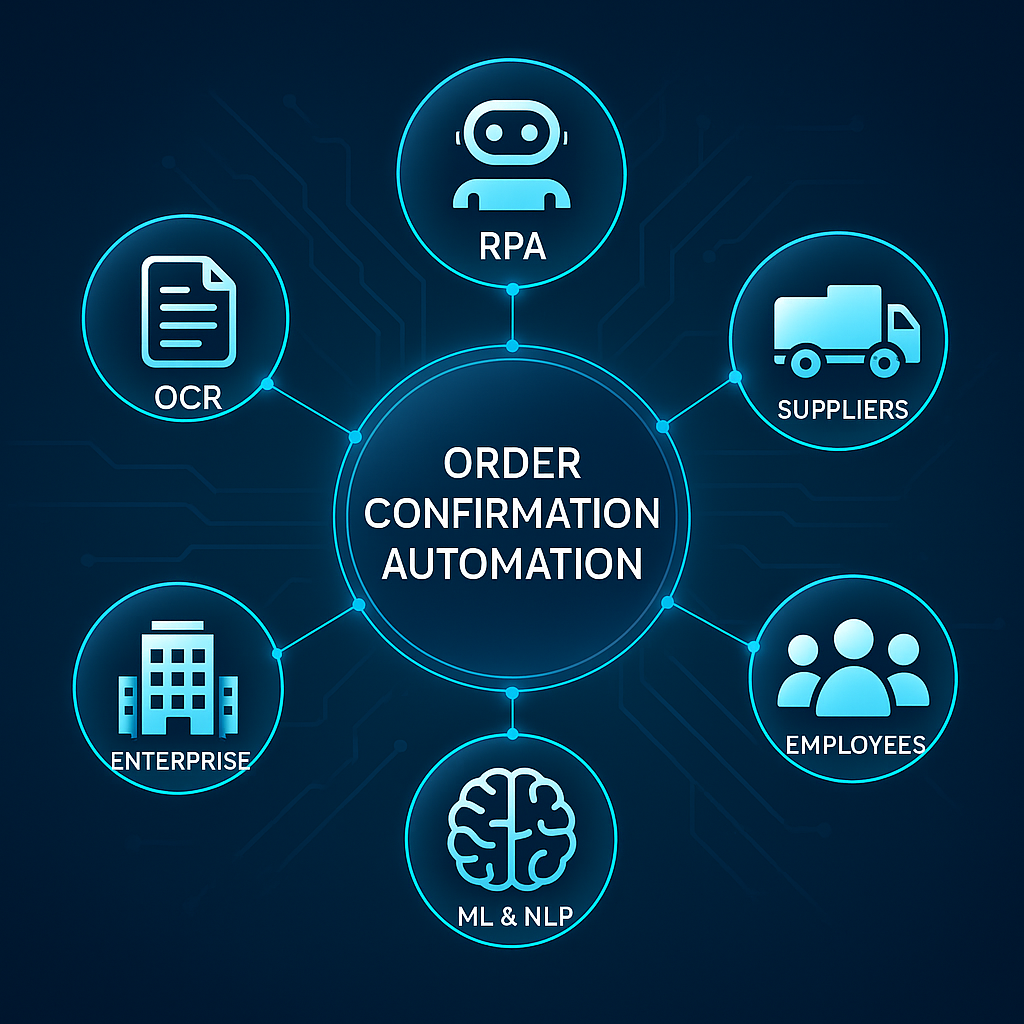Technologies for Automating the Reading and Verification of Order Confirmations: Potential and Limitations
Integrating OCR, RPA, and AI while Accounting for Internal and External Factors

Topic
Order confirmations remain a time-intensive and error-prone aspect of operational procurement. This research examines how technologies – particularly OCR, RPA, and AI (NLP and ML) – can support automation efforts. Based on expert interviews and a thematic analysis, the study identifies key technological and organizational enablers and barriers to implementation. It also develops a practical, process-oriented model that shows how these technologies can be orchestrated depending on the format of incoming documents and contextual factors, such as supplier collaboration and data quality.
Relevance
Despite the digital transformation and automation of many processes, the reading and verifying of order confirmations often remains manual and inefficient. This increases error rates and limits scalability in daily operations. Automating this process not only enhances efficiency and accuracy but also frees up valuable human resources for higher-value tasks. It not only explores the technological potential but also highlights limitations and the organizational preconditions necessary for successful implementation. For practitioners, understanding these enablers and boundaries is essential in planning realistic automation initiatives.
Results
The thesis presents a process-oriented model that maps how OCR, RPA, and AI (ML/NLP) can be orchestrated to automate the reading and verification of order confirmations. It shows that full automation is only feasible when key data fields between the order confirmation and purchase order match, while exceptions still require human intervention. Internal and external conditions – such as master data quality, supplier collaboration, and format variability – strongly influence success and are also represented in the model. Thus, effective automation is not only about technology, but also about process design and organizational alignment.
Implications for practitioners
- Adopt a hybrid automation strategy
Use OCR when needed for data exctraction. Use rule-based RPA for structured, repetitive documents and combine it with AI-driven approaches for handling unstructured formats. - Ensure master data quality and process consistency
Automation depends heavily on accurate master data – well-maintained data reduces the number of manual interventions required. - Involve employees early and foster trust in AI
Early engagement and training increase employee acceptance of automation initiatives. A “human-in-the-loop” model helps maintain control and improves trust in system reliability. - Promote supplier digital readiness and standardization
Work closely with suppliers to align on digitalization and automation initiatives.
Methods
The thesis applied a qualitative, exploratory research approach based on 12 semi-structured expert interviews with professionals from procurement and technology domains. A purposive sampling strategy was used to select participants based on their relevant expertise. To ensure targeted insights, two interview guides were developed – one for procurement professionals and one for technology experts. Thematic analysis followed the Gioia methodology, enabling structured coding and the development of aggregate dimensions. All interviews were anonymized. This approach allowed for the identification of both technological and organizational factors influencing the automation of order confirmations in procurement.
